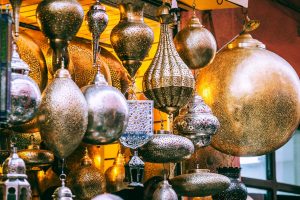How Do Forex Dealers Make Money With
Cryptocurences?
A Cryptocurrency exchange, or virtual currency exchange, is simply a company which enables
users to trade digital currencies or other virtual currencies for conventional legal tender, such as
traditional fiat currency Hero Park. This way of transacting money has been around for quite some time
now, but it was not until recently that the general public saw this type of company operate on a
global scale. Now, more traders are turning to these types of exchanges in order to do business
on a daily basis. These companies allow for the easy transacting of money which goes by a
variety of different names, including Forex, Digital Cash, and Cryptobank, among others.

When you start looking into how the Cryptocurrency market works, you’ll quickly see that there
are many different ways it can be utilized. One way that the Cryptocurrency Exchange Market
can be utilized is for the trading of digital currencies. Simply put, anyone can use this market to
buy and sell any type of virtual currency that they wish. This includes such popular currencies
as: Gold, Silver, Platinum, Oil, and various other commodities. As you can see, it is possible to
use the Cryptocurrency Market in a very diverse way.
Another way that the Cryptocurrency Exchange Market functions is by allowing users to utilize
what is known as “peer-to-peer” trading. Peer to peer transactions happen between individuals
with personal computers rather than through a public ledger system like the ones found in
traditional banks. Because the transactions occur between individuals rather than through a
bank or another large institution, the Cryptocurrency Market is also able to function with smaller
transaction sizes.
The other way in which Cryptocurrency Mining occurs is through what is called Proof of Stake
mining HeroPark. It is this process which provides miners with the incentive to continue to secure the
Cryptocurrency they are mining for future generations. If you have ever wondered how a small
group of people are able to control the future of such a valuable item as gold, you are going to
be interested to know that this process is carried out on a daily basis. Over the course of a year,
a person can literally earn millions of dollars simply by investing in the future of Cryptocurences
like gold.
A major problem which many people who are involved in the Cryptocurrency Mining Business
might not be aware of is that the profitability of their business can be seriously compromised if
the actual value of their Cryptocurences drops. For example, in case the value of the gold which
they are holding decreases, a large number of people could lose a great deal of money. As
such, you should take note that when the value of the Virtual Currencies which you are trying to
sell increases, you will also see an increase in your profits. The only problem that exists with this
aspect of Cryptocurences is that the prediction period which follows the actual sale of the item
rarely happens.
In order for you to make the most out of your investment opportunities with Cryptocurences such
as gold, the first thing that you need to do is to look for a reliable and profitable Virtual Currency
dealer. You should first ask your friends and family members for recommendations before you
start searching for a suitable dealer. Once you have found a reliable dealer, it is important to
then invest in the Virtual Currency that he is offering. This will then allow you to reap profits from
your investments faster than you ever expected. Keep in mind that there are different ways in
which you can mine Cryptocurences, but it would be advisable to stick to one method or the
other until the market reaches a peak and then you can start using different methods to diversify
your income. This will allow you to stay long in the business without having to experience the
negative aspects associated with the business.

 Most ancient calendars were based on lunar cycles , on the change of seasons, or on the movements of the Sun; The oldest calendar being the one found in Aberdeenshire, Scotland, carved into a Mesolithic monument dating from 8000 BC, this primitive calendar measures time from the phases of the Sun and the Moon.
Most ancient calendars were based on lunar cycles , on the change of seasons, or on the movements of the Sun; The oldest calendar being the one found in Aberdeenshire, Scotland, carved into a Mesolithic monument dating from 8000 BC, this primitive calendar measures time from the phases of the Sun and the Moon.
 Every time we breathe, we inhale about 20,000 microscopic dust particles; some stay in the hairs of the nose, others adhere to the walls of the throat and many more in the lungs.
Every time we breathe, we inhale about 20,000 microscopic dust particles; some stay in the hairs of the nose, others adhere to the walls of the throat and many more in the lungs.


